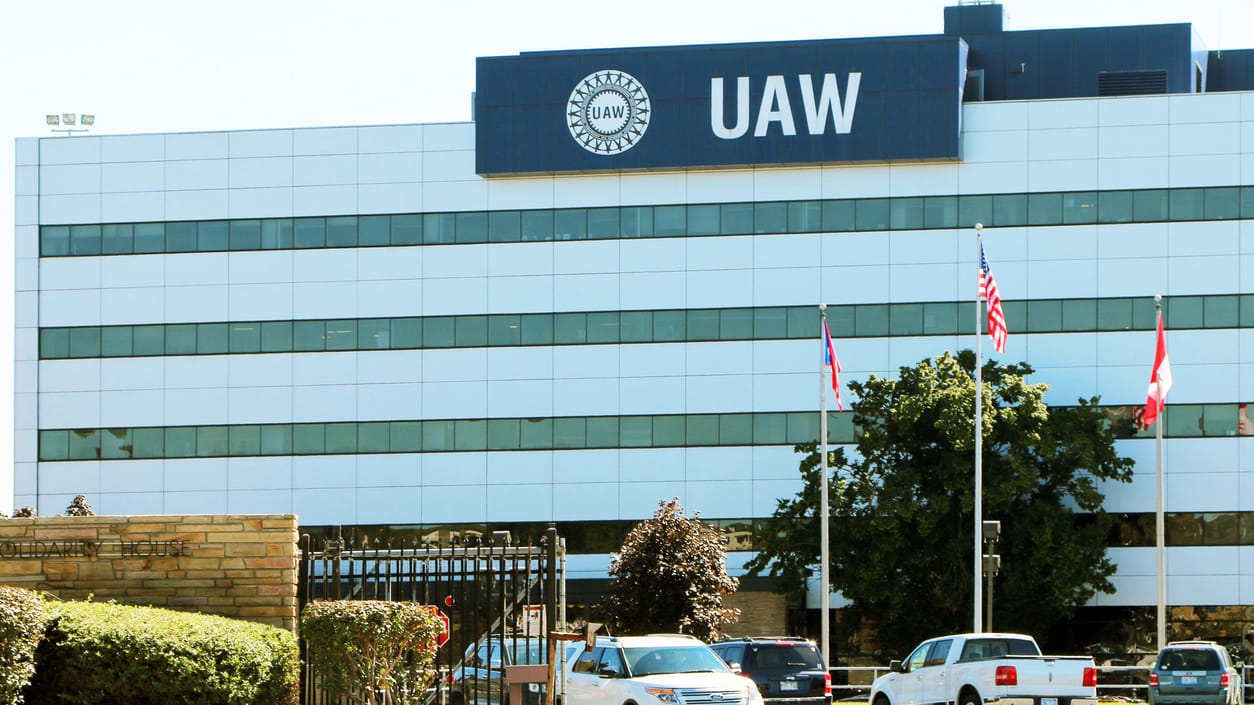The United Auto Workers (UAW) union and Ford Motor Company struck a tentative agreement on Oct. 25 to end a nearly six-week strike. We've gathered a group of stories on the news from SHRM Online and other trusted sources.
Large Pay Boost
The tentative agreement includes 25 percent pay increases over the terms of the agreement. It will cumulatively raise the top wage to more than $40 an hour, including an increase of 68 percent for starting wages to over $28 an hour. It also includes reinstatement of cost-of-living adjustments, a three-year path to top wages and the right to strike over plant closures.
The tentative deal must still be approved by local UAW leaders and then ratified by a simple majority of Ford's 57,000 union-represented workers.
Ford is now focused on restarting production at the Kentucky Truck Plant, the Michigan Assembly Plant and the Chicago Assembly Plant, where there were union-initiated walkouts of roughly 16,600 workers.
(CNBC)
GM and Stellantis Workers Continue Striking
The tentative agreement comes after a 41-day strike against Ford, General Motors and Stellantis. The deal includes ending different pay tiers for workers, improving retirement benefits and permitting workers to strike over plant closures.
The strike will continue against General Motors and Stellantis, as those companies and the UAW had yet to reach an agreement on a new contract.
In recent weeks, the UAW has had members elsewhere ratify a contract with General Dynamics while rejecting a tentative agreement with Mack Trucks.
Enhancing Retirement Benefits
The Ford deal could set the pattern for agreements with General Motors and Stellantis. Typically, during past auto strikes, a UAW deal with one automaker has led to the other companies matching it with their own settlements. Previously, Ford, Stellantis and General Motors had all offered 23 percent pay increases.
If the Ford deal is ratified, workers with pensions will see increases for when they retire, and those hired after 2007 with 401(k) plans will get large increases.
High Cost for Automakers
The UAW strike is the union's first against all of Detroit's Big Three automakers simultaneously. It is the first national strike that Ford has faced since 1979.
The fallout for the automakers has been swift, with General Motors saying the strike was costing it $200 million a week—and that was before the UAW walked out of an additional GM plant in Arlington, Texas. The automakers have warned that significantly increasing their labor costs will make it hard for them to compete against nonunionized rivals.
The Ford deal arrives during a period of heightened workplace activism in the United States. Fueled by a tight labor market, surging inflation and resurgent enthusiasm for unions, workers are striking in elevated numbers this year and reaping big results for their pocketbooks.
Laying Off Workers
With General Motors and Stellantis, the UAW wants pensions to cover more workers, companywide health care for retirees, shorter hours and measures that make it harder for companies to close U.S. plants. In addition, rather than tiered wages, which provide higher pay for those with lengthy seniority, the union is calling for "equal pay for equal work."
General Motors idled an assembly plant in Kansas because of a shortage of parts due to the strike. Approximately 2,000 of its workers were temporarily laid off. Stellantis laid off about 370 workers at three parts factories that supply its Jeep plant in Toledo, Ohio, where the UAW has gone on strike. The carmakers have said they're developing contingency plans for further work stoppages.
Deals in Canada
General Motors and Unifor, the union representing Canadian autoworkers, reached a tentative contract agreement on Oct. 10, ending a one-day strike involving about 4,300 workers at two General Motors factories and a parts warehouse in Ontario. The General Motors workers struck after Unifor members ratified a new three-year labor contract with Ford in September. The General Motors deal includes pensions, retiree income support and converting full-time temporary workers into permanent employees.
The car industry isn't alone. Health care workers at Kaiser Permanente and Hollywood screenwriters and actors participated in high-profile strikes this year.




